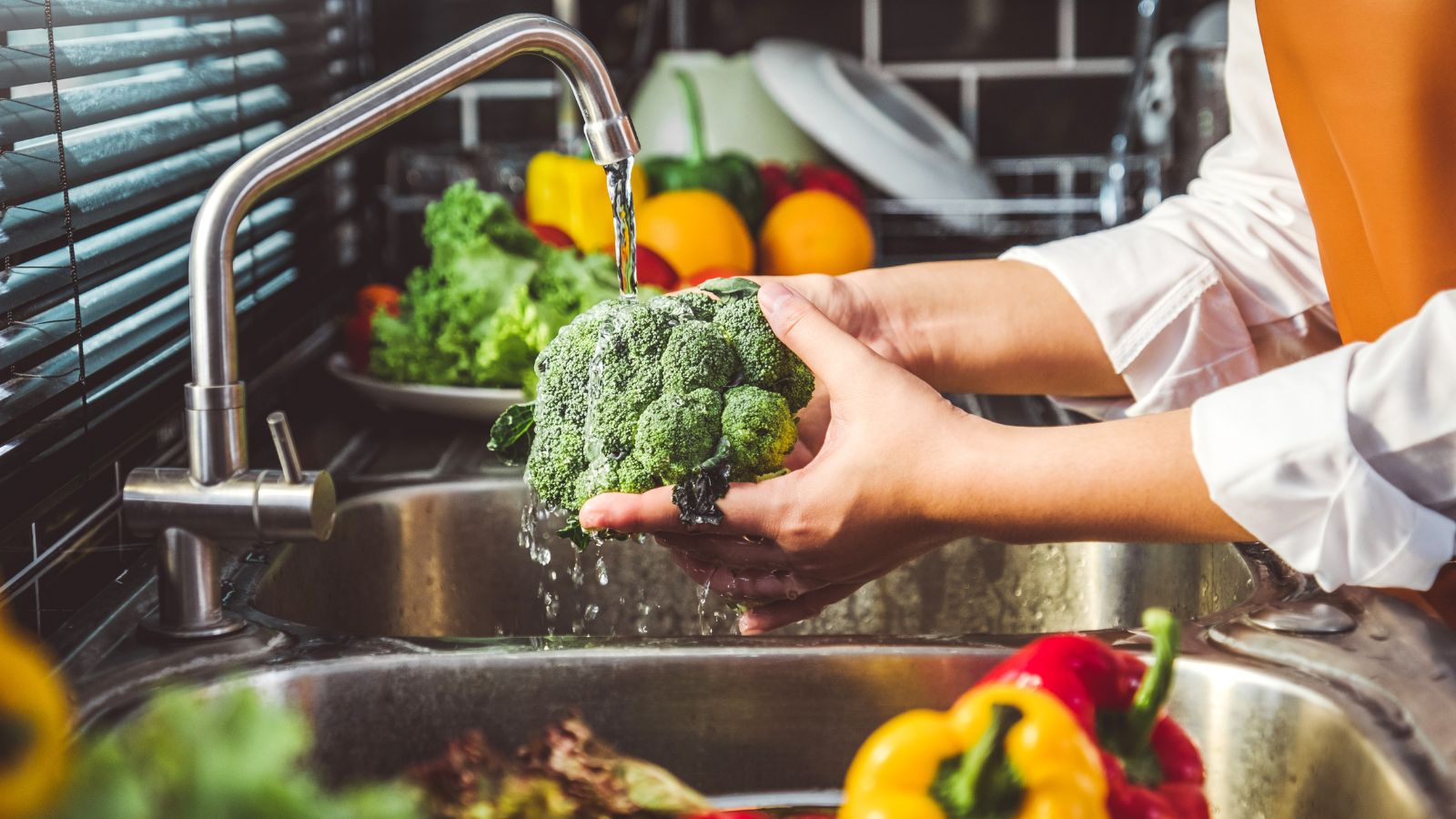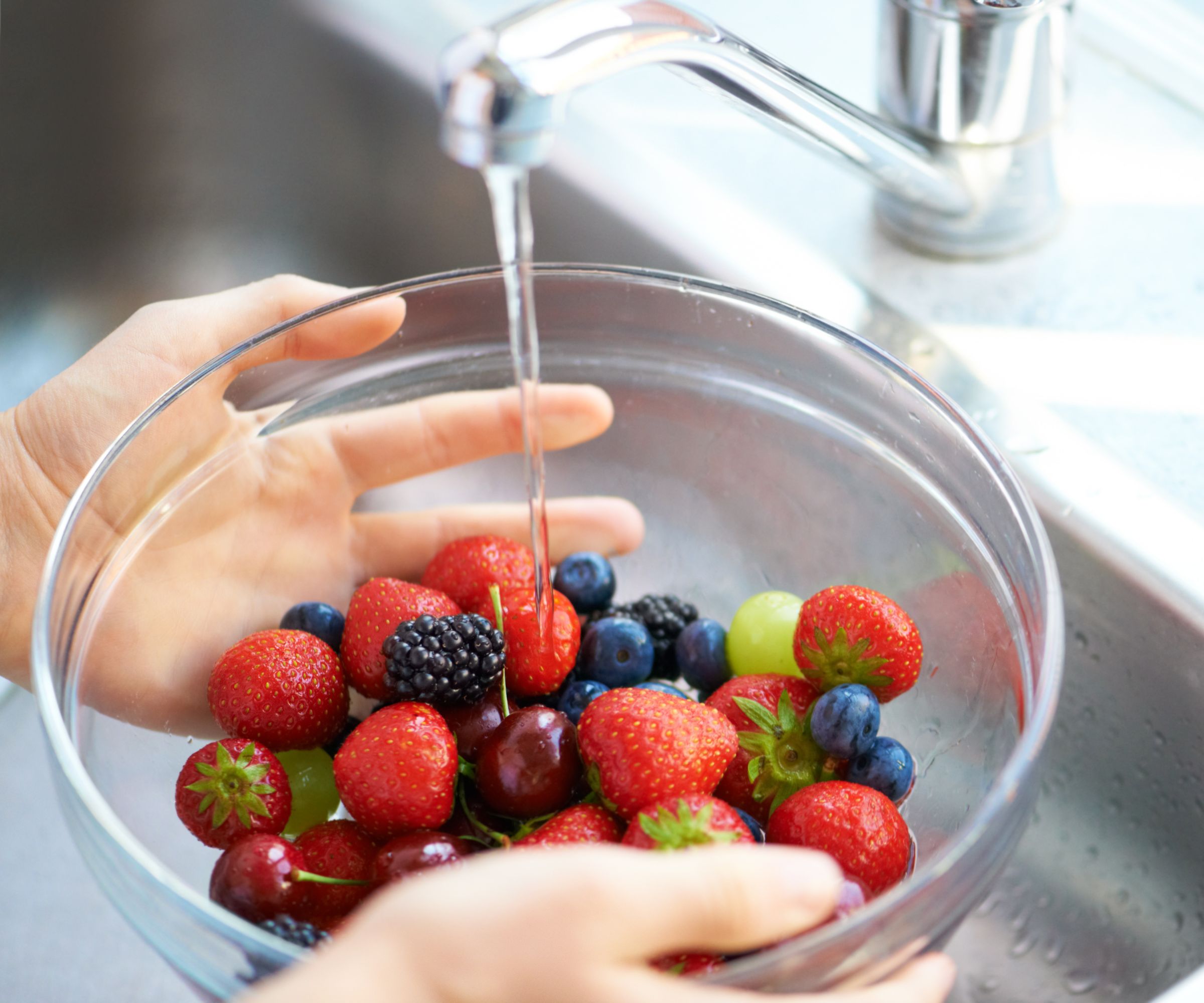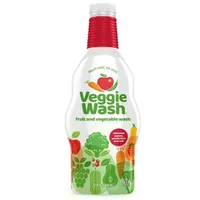How chefs wash fruit and produce – and why is it vital before you start cooking
It turns out how and when you wash your fruit and produce can make all the difference to your food quality, experts say


When fruit and vegetables come packed in tight plastic packaging, or from the pristine shelves of a farmer’s market it can be easy to assume they are all clean and ready to eat, but that couldn't be further from the truth.
Whether starting to prepare dinner, or looking for some food storage tricks to extend the life of your groceries, there are a few methods you can use to remove pesticides, pests, dirt, and bacteria from your fresh foods ready for a tasty meal.
Here, professional chefs and cleaning experts share the best way to wash fruit and products at home – and when to wash them to keep them fresh in your fridge.
How to wash fruit and produce
If you spend any time on the internet, then you will likely be familiar with the satisfying videos of bringing produce home, washing it, and decanting it into glass containers to be stacked in the refrigerator. However, this could be doing more harm than good, professionals warn.
You should only wash your fresh product and fruit directly before using them, especially for foods stored in the refrigerator. Why? The added moisture can speed up the rotting process.
It is also sensible to store your fresh food in containers with air holes, to allow good airflow to help keep your food dryer and prevent rapid decaying. With that in mind, here is how to wash produce before cooking:

1. Bathe them in vinegar or baking soda
Cleaning with vinegar is not just reserved for your kitchen counters. In fact, it is one of the best things to wash fruit and produce thanks to its ability to kill mold spores, bacteria, and small bugs.
Design expertise in your inbox – from inspiring decorating ideas and beautiful celebrity homes to practical gardening advice and shopping round-ups.
You should create a cleaning solution of three parts water to one part vinegar, explains Prerna Jain, cleaning expert at Ministry of Cleaning. Then, soak the produce in the solution for five to 10 minutes before rinsing thoroughly under cold running water to remove any vinegar taste, and drying with a clean, lint-free towel.
You can also clean with baking soda, adding a teaspoon or two into the vinegar water mix when washing vegetables with lots of crevices like cauliflower or broccoli, to ensure the mixture cleans deep within the pores.
2. Scrub with a vegetable brush
Another solution that avoids chemicals is to use water and a vegetable brush, suggests Emma Rostron, professional cleaner and general manager at One Less Thing cleaning services. This only works for firm produce, or fruits with a hard rind, to avoid bruising the item and making it go bad more quickly.
‘Firm produce like potatoes, cucumbers, or carrots may require a bit more effort. A vegetable brush, such as this from Amazon, is a great investment for cleaning root vegetables, where you can scrub the surface under running water to remove any dirt or wax coatings,’ she explains.
Cleaning peelable vegetables like potatoes and carrots like this also means you can leave the skins on to cook with. The skin holds most of the nutrients and fiber of the vegetable, so is best left intact.
3. Use a commercial fruit and vegetable wash
Of course, there are commercial fruit and vegetable washes available that are designed to help clean fruit and produce without aftertaste. These solutions are not any better or any worse than using vinegar, but simply add a little extra convenience as they are premixed and are most commonly used by chefs in professional settings.
‘I advise you to use a vegetable and fruit wash solution to mitigate any risks of contamination,’ says Norah Clark, pastry chef and owner of YummyTasteFood. ‘Products like Veggie Wash, available at Walmart and many others can sanitize up to 99% of bacteria and other harmful elements,’ she advocates.
Veggie Wash | $26.45 from Walmart
If you are looking for a quick cleaning solution that is predesigned to get rid of wax coatings, pesticides, and bugs from your food, then Veggie Wash is a popular option and has no aftertaste.

Norah Clark is a trained pastry chef and has worked at numerous luxury hotels such as The Ritz Carlton Hotel and The Savoy, in London. She is also a trained diet consultant and trained nutritionist and now dedicates her time to sharing her knowledge online on her food blog YummyTasteFood having taken time away from professional cooking to travel and relax.
4. Wash produce after cutting it up
Some produce, particularly tricky vegetables such as cauliflower, broccoli, and leeks, can harbor all sorts of dirt and contaminant between their leaves, making them hard to wash whole. As a result, Emma Rostron, professional cleaner suggests prepping the veg first before soaking it in a water bath, ‘gently agitating them to ensure all the dirt is removed before wiping dry with a paper towel.’
The same goes for vegetables that have a peel, she adds. ‘Cabbage come to mind for this. It may be necessary to remove the outer leaves or skins before washing so you can get rid of any dirt that’s been trapped against the section you are going to eat.’
FAQs
Should you wash fruit and veg in cold or warm water?
It is best to wash fruit and produce in cold or room-temperature water to help preserve the structure of the produce and prevent it from wilting or beginning to cook in hot water. You can either rinse the food under running cold water to help brush away loose debris, or alternatively soak the item in a bowl of water to help get into tiny pores.
Should you wash food with salt?
Fresh foods such as fruit and produce can benefit from a soak in some salt water solution to help remove and kill bugs lingering in leaves or pores on the surface of the fruit. Himalayan salt is touted as best for this, but any salt will do. Mix the salt into the water until added salt no longer dissolves, then leave your produce in the bowl, completely submerged, for 10-15 minutes.
Cleaning your fruit and produce – along with washing your hands, tools and keeping on top of cleaning the kitchen – makes it easier to make delicious, and safe, meals. Keep a large bowl for soaking and a colander or sieve close by your sink space to make washing more convenient – this will make it more likely that you will wash them properly and not cut corners.

Chiana has been at Homes & Gardens for two years and is our resident 'queen' of non-toxic living. She spends most of her time producing content for the Solved section of the website, helping readers get the most out of their homes through clever decluttering, cleaning, and tidying tips. She was named one of Fixr's top home improvement journalists in 2024.
